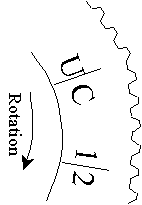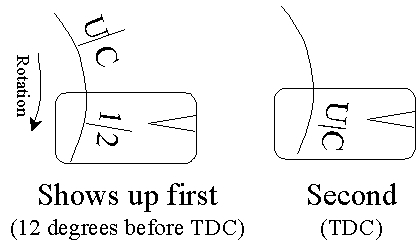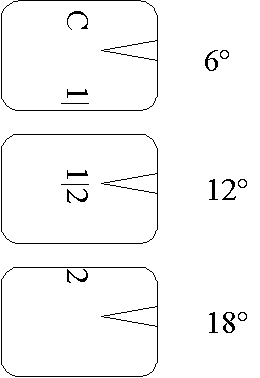|
1931
Engine Timing - Page 3 Some information about the dwell and timing on a Chev six cylinder engine. |
|
Timing When the number one cylinder piston reaches it's highest position, the engine is considered at the top dead center position. This is marked on the flywheel as UC (Upper Center). 12 degrees is approximately four teeth to the right of U/C.
Early manuals stated that your engine should be set to fire at 12 degrees before top dead center. If you are trying to see this on the flywheel, then the pointer on the housing will be on the line separating the "1" and the "2" on the flywheel.
Based upon later shop manuals and personal experience from many VCCA members, a much better timing for early 30's Chevs is 18 degrees BTDC (along with a spark plug setting of .040). When setting timing at 18 degrees, you need to advance the timing (by turning the distributor) until the "1|2" mark just disappears out of the TOP of the timing opening on the bell housing.
When going from 6 to 18 degrees, you are "advancing" the timing. This is accomplished when you turn the distributor counter-clockwise. This is the same as pushing in on the Spark control on the dashboard.
Each time the car is started, hot or cold, the spark knob
on the instrument panel should be pulled out to retard the spark making
the car easier to start. CONCLUSION: Time it at 12 degrees advanced (noting the the mark on the flywheel), with the spark knob pushed all of the way in. After you get the car running, then bump the timing to 18 degrees, and make sure that your AC spark plugs are gapped to .040". |
 Flywheel Markings |
| Diagrams by Bill Barker | |



